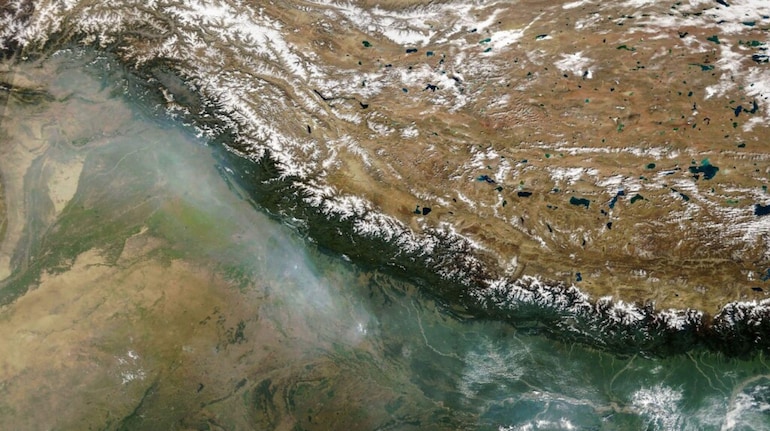
Residents of Delhi and its adjoining areas woke up to strong tremors caused by an earthquake of magnitude 4.0 this morning. According to the National Centre of Seismology, the quake hit at a depth of about 5 km. Videos showed the ground and buildings shaking, forcing people to rush out of their homes.
There have been no reports of casualties or damage to properties, but many residents claimed that the tremors were so strong that it felt like a bridge was collapsing. However, the quake itself was not of a high-intensity magnitude. Generally, an earthquake below 2.5 magnitude does not cause tremors, a quake between 2.5 to 5.4 magnitude leads to minor tremors without any damage. Any quake higher than that is likely to cause strong tremors and damage.
Then why did the 4.0 magnitude earthquake in Delhi feel so strong?
There are many reasons behind this, mainly the epicentre of the quake was Delhi itself. According to the US Geological Survey (USGS), an earthquake's most intense shaking is often felt near the epicentre. However, the vibrations can still be felt hundreds of miles away from it. The Dhuala Kuan area - the epicentre of today's quake - has been experiencing smaller, low-magnitude earthquakes once every two to three years. It had recorded an earthquake of 3.3 magnitude in 2015.
Another reason for intense tremors is that the quake was a shallow-depth earthquake. Generally, shallow earthquakes, originating five or 10 kilometres below the surface, tend to cause more damage than those originating deep below the surface. This also led to a loud grumbling sound during the quake. The USGC said that high-frequency vibrations from shallow earthquakes generate a booming sound as the ground vibrates and creates a short-period seismic wave motion that reaches the air and becomes sound waves. The shallower the epicentre, the more energy and sound can be produced.
However, sometimes, earthquakes can create booming sounds even when no vibrations are felt.
Delhi, being a densely populated city, also led to strong tremors as the seismic waves travel a shorter distance and reach the structures faster in such areas.
The national capital is also prone to earthquakes as it is located in the Seismic Zone IV. According to the Delhi Disaster Management Authority, this zone has a fairly high seismicity where earthquakes generally occur in the range of 5-6 magnitude, and even 7-8 occasionally. The zoning, however, is a continuous process that keeps changing.
Seismicity in North India, including the Himalayas, is due to the collision of the Indian plate with the Eurasian plate. These colliding plates flex, and store energy like a spring, and when the plate's margin finally slips to release energy, an earthquake results.
'Nothing to worry': Expert on Delhi earthquake
Director of the National Centre for Seismology, Dr OP Mishra has assured residents of the national capital that there is nothing to worry about as aftershocks of lesser magnitude are "natural".
"Delhi has been experiencing minor earthquakes. This earthquake occurred in Dhaula Kuan. In 2007, an earthquake of 4.7 magnitude had occurred there. There is nothing to worry about. It is a seismic zone there...The earthquake occurred due to in-situ material heterogeneity. After 4.0 magnitude, the aftershock will be less by 1.2 magnitudes, it is natural as it will heal it," he added.
from NDTV News- Special https://ift.tt/UiVzOgX


0 Comments